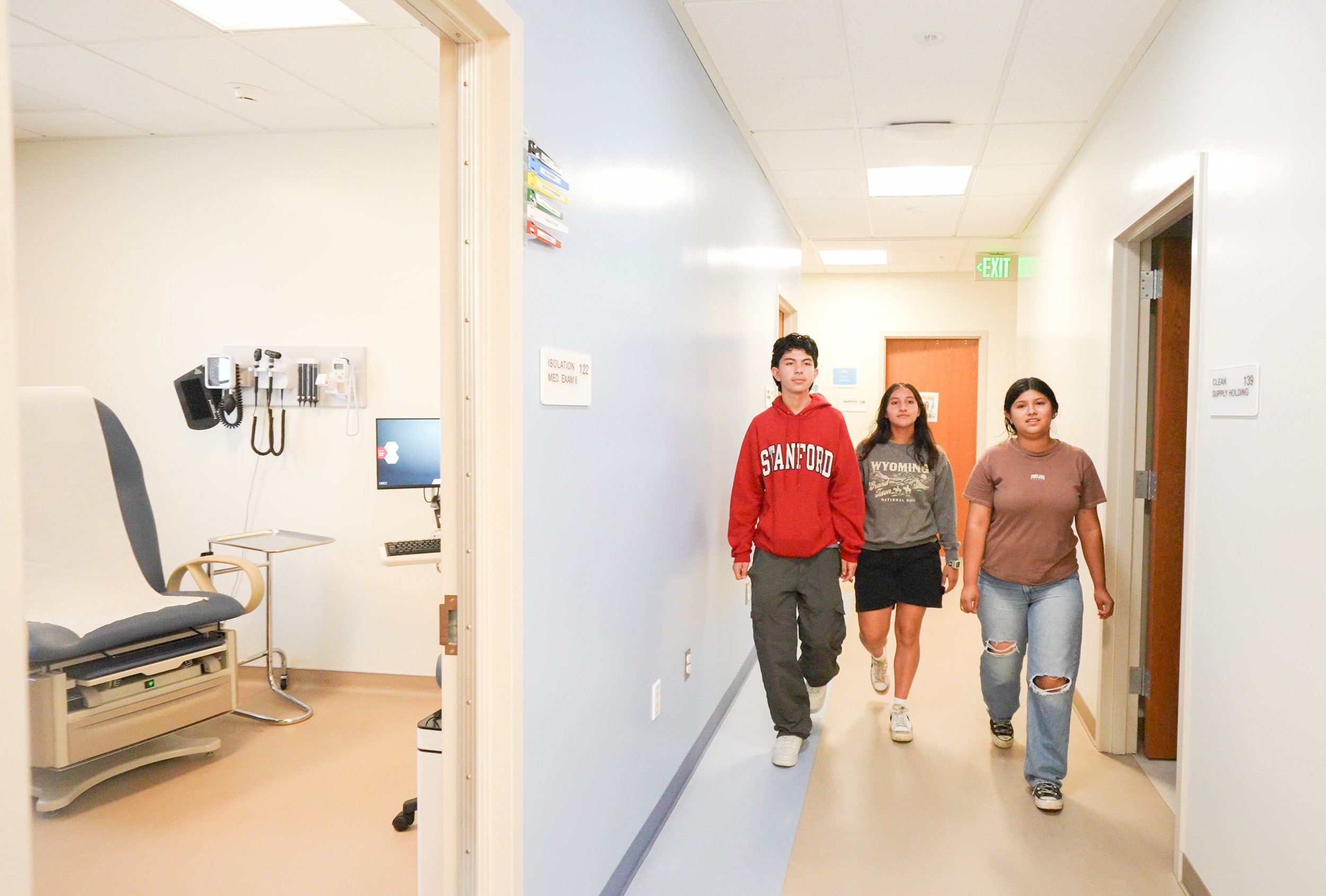Boys' HPV vaccination rates lag behind girls'
Méndez High School students touring their campus wellness center
The Human Papillomavirus (HPV) is the most common Sexually Transmitted Infection (STI), infecting about 43 million people in their late teens and early 20s, according to the Center for Disease Control and Prevention. It is most commonly spread through sex and close skin-to-skin touching during sex. Although multiple cancers can be attributed to the virus, only less than half of the target population actually receive the vaccine, and vaccination rates among males are even lower.
The low vaccination rate in males has largely been attributed to the common misperception that HPV affects only females. This makes sense given that the vaccine was initially advertised as a means to prevent cervical cancer. Notably, parents of boys often express more uncertainty regarding HPV vaccination when compared to parents of daughters. The disparity between male and female vaccination rates is particularly alarming as we are seeing a rise in oral cancers while cervical cancers decrease. Oral cancers are more than twice as common in men as in women.
Currently, the CDC and the Advisory Committee on Immunization Practices (ACIP) recommend that all girls and boys aged 11 or 12 years should get the recommended series of HPV vaccine, which is 2 doses for persons starting the series before their 15th birthday. However, many parents are not comfortable talking about the HPV vaccine because it is associated with sexual behavior.
Axel Berganza at the Méndez Wellness Center
“While I feel comfortable talking about the vaccine with my parents, it might not be the same for everyone” said Axel Berganza, a 15-year-old HPV-vaccinated male and Student Advisory Board member from Méndez High School in Los Angeles. “Discussions on the HPV vaccine can prompt uncomfortable discussions about such topics as sexual activity. However, it is important to acknowledge that the HPV vaccine has undeniable long-term benefits.”
Male parents also trail in awareness of HPV and the vaccine compared to mothers. For example, a study of parents in Los Angeles County found that “parents who were male, older, less educated, and had sons remained significantly less aware” of HPV vaccination.
To reduce the disparities in HPV vaccinations we must address the misinformation surrounding HPV and the vaccination. The HPV vaccine has been proven to be safe and effective in preventing cancers in men and women and does not contribute to any health issues. In addition, numerous studies have shown no increase in sexual behavior after getting the vaccine. Boys and girls don’t have sex earlier, and do not gain more partners after they become sexually active. And while the initial HPV awareness campaigns were aimed at women, there is hope that this narrative is gradually evolving, albeit at a gradual pace. Today young men are increasingly being included in campaign messaging with healthcare providers and school-based health centers adding to the increase of males receiving HPV services.
Increasing HPV vaccinations among boys will require a coordinated, multi-layered approach that understands the needs and context of target populations. Achieving this ambitious goal requires a crucial shift: extending HPV vaccination to include boys before they become sexually active. We cannot leave our boys behind, and they deserve to have their needs met by increasing school, community, family and individual awareness of HPV and the benefits of vaccination.


